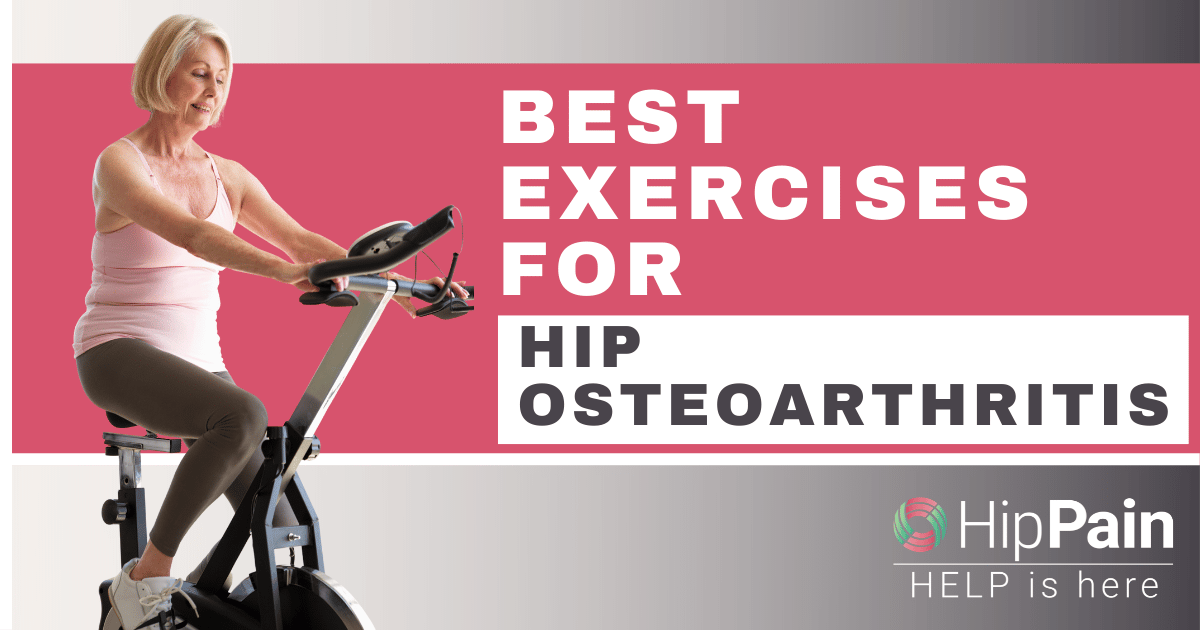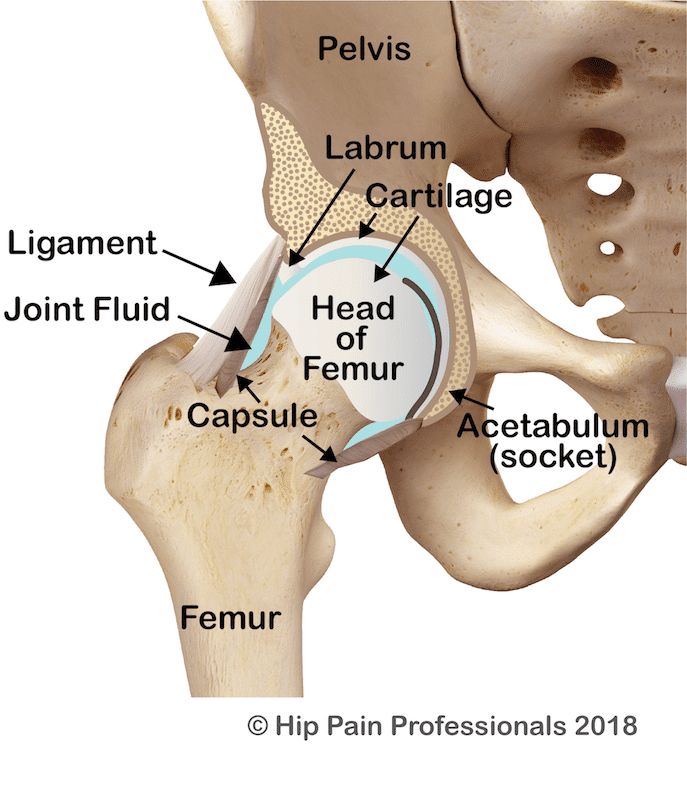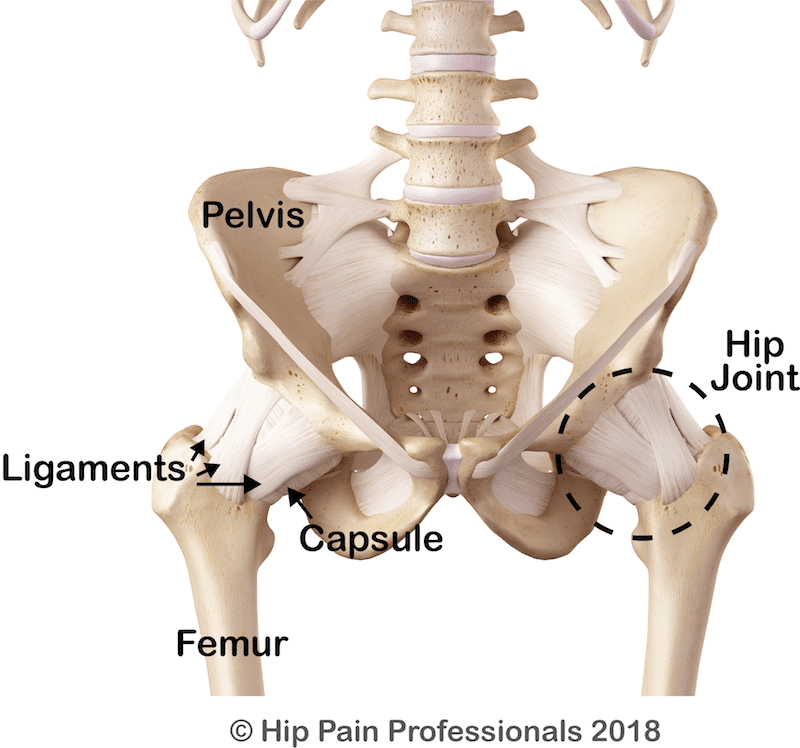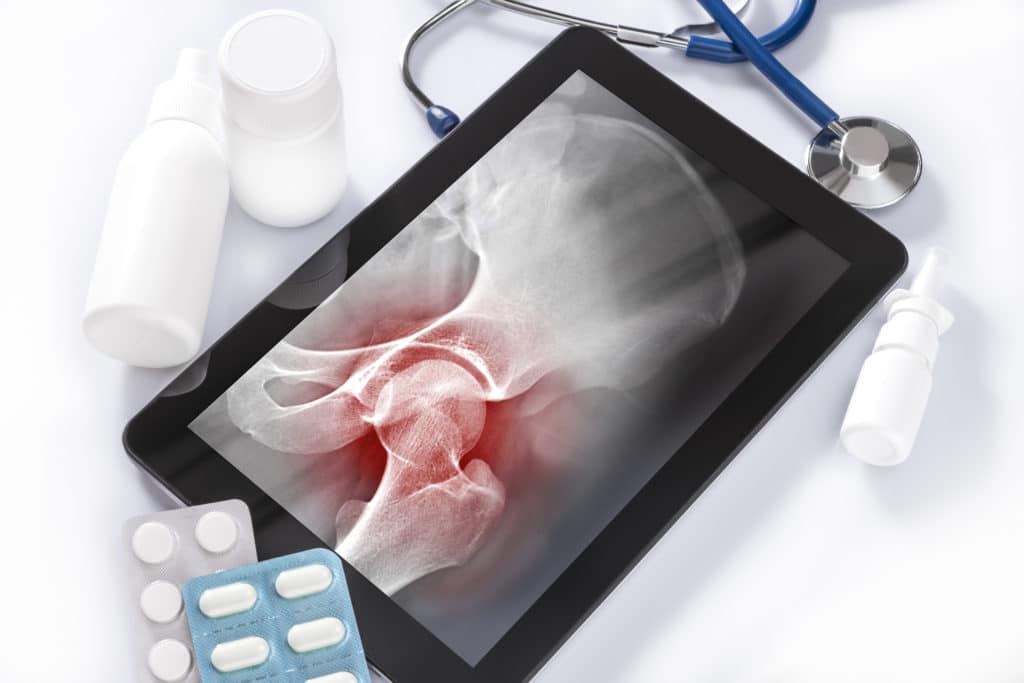Quick recap on last week……
Last week we looked at what actually is “pain”. How does it occur and what are the general structures around the hip and pelvis, that is, the hip joint anatomy, that can be involved in hip pain.


Last week we looked at what actually is “pain”. How does it occur and what are the general structures around the hip and pelvis, that is, the hip joint anatomy, that can be involved in hip pain.

A joint is formed where two bones are joined together, with varying amounts of movement occurring between them. Hip pain may be related to the structures involved in the function and support of a joint. The hip joint is the largest ball and socket joint in the body. The ‘ball’ is the head of the femur (thigh bone). The socket in the pelvis, is called the acetabulum
Both the ball and socket are lined with smooth cartilage which allows the bones to slide against each other easily. The smooth cartilage lining the socket merges into a fringe of a more fibrous cartilage that joins around the edge of the bony socket. This is called the labrum (acetabular labrum). It has a variety of functions, assisting in joint stability and health. The labrum makes the joint deeper and hugs firmly around the head of the femur, providing a suction effect. Both of these features contribute to joint stability. The labrum is also involved in the flow of nutrient-rich joint fluid and trapping fluid between the bones when you land on your foot in walking and running. This provides a cushioning effect for your cartilage and helps maintain joint health.

The hip joint, viewed from the front. Cross-section through the middle of the joint.
The ball and socket joint is surrounded by a fibrous capsule, reinforced by a number of ligaments that run between the pelvis and femur. These strong ligaments provide stability for the joint but are also flexible, allowing your hip to move in large ranges of motion. There is a large normal variation in how flexible these ligaments are in different people.

Front view of the hip joint with its surrounding capsule and reinforcing ligaments.

Changes in joint health:


Hip joint related pain is most commonly experienced at the front of the hip (anterior hip), but may also be felt in the groin, side of the hip (lateral hip) or deep in the buttock. Other things may also cause pain in these areas, so visit our Pain Locator Map to read about different things that may be related to pain in each of these regions.
After a thorough assessment, your Hip Pain Professional will be able to:
This blog was written by Dr. Alison Grimaldi, with contribution from one of our Hip Pain Professionals, Kirsty McNab, experienced physiotherapist.
Dr. Alison Grimaldi is a globally recognised expert physiotherapist, researcher, and educator, who has over 30 years professional clinical experience helping patients recover from a wide range of hip and pelvic conditions.

Dr. Alison Grimaldi BPhty, MPhty(Sports), PhD, FACP
Dr Grimaldi has completed Bachelor of Physiotherapy, Master of Physiotherapy and Doctor of Philosophy (Physiotherapy) degrees. She is a fellow of the Australian College of Physiotherapists, Practice Principal of PhysioTec Physiotherapy, an Australian Sports Physiotherapist , an Adjunct Senior Research Fellow at the University of Queensland, as well as an author and global educator. Her passion is helping people with hip pain, and educating other health professionals around how to help more people with hip pain.

Now you understand a little more about what your hip joint is, what can go wrong with it and how a Hip Pain Professional can help.
In our next few blogs we will look at some simple, easy ways you might improve your pain. Next week we will look at reducing your pain when walking and running, and the week after we will look at some key things for you to consider when considering what is too much!!!! – Check out next week to find out more!
Or sign up to our newsletter below and receive lots of great info directly to you.

